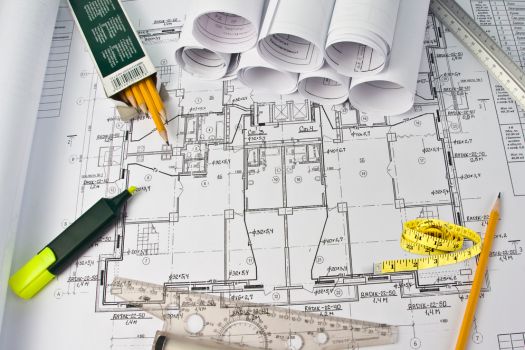When people start their home search, they often focus on location and price. But another question is just as essential, and often overlooked: what size home are buyers buying? If you’ve been thinking about what square footage makes the most sense for your lifestyle, you’re not alone. With so many different priorities driving decisions — from flexibility in layout to future-proofing a move — understanding housing size insights from recent home purchases can help you make smarter choices.
Whether you’re a buyer trying to figure out what fits your needs or a seller looking to better understand what your home offers in today’s marketplace, having clarity about home size trends puts you at a significant advantage. And that’s exactly what I help clients do.
I’m Robbie English, Broker and REALTOR at Uncommon Realty. With decades of hands-on experience, national speaking engagements, and a long history of teaching other real estate professionals the art and science of our industry, I bring a highly strategic approach to every transaction. My team and I live and breathe Austin real estate, and we make it our mission to ensure you buy or sell not just a home — but the right one.
Let’s dig into how home size is influencing buying decisions today, and how these insights can guide your next move.

TLDR: What size home are buyers buying — and why it matters to your next move
- Buyers today are focusing on efficient use of space, not just square footage.
- The size of homes being purchased varies widely based on life stage and lifestyle.
- Detached homes remain popular, but higher price-per-square-foot properties like townhomes are surging.
- “What size home are buyers buying” is influenced more by priorities than price.
- Robbie English and his team deliver expert, personalized guidance grounded in decades of experience.
Understanding who’s buying what size homes
The story of what size home buyers are buying isn’t told in square footage alone. It’s woven into goals, expectations, and sometimes even compromises. First-time buyers, for instance, typically seek something manageable and cost-efficient. The median size for these buyers sits around 1,670 square feet. Why? Because the focus is often on securing that initial step into ownership, balancing affordability with comfort.
Repeat buyers, by contrast, aren’t just buying more space — they’re buying possibilities. With more life experience and often more resources, they look for homes that offer flexibility, privacy, and room to grow into. For them, 1,970 square feet or more is often the benchmark.
These numbers reflect deeper housing size insights from recent home purchases. We’re seeing a shift in how people think about space. It’s not just about how big — it’s about how well the space works.
Who buys smaller homes — and why
Smaller square footage isn’t necessarily a compromise. For some, it’s a preference. Many buyers actively seek homes under 1,600 square feet — especially those living alone or leading more mobile, minimalist lifestyles.
Single buyers often gravitate toward homes sized for ease rather than excess. The median sizes? Around 1,500 square feet for women and 1,600 for men. These aren’t starter homes, necessarily. They’re smart investments — a way to own without overspending or overcommitting to maintenance.
In my work with clients throughout Austin and surrounding areas, I often hear variations of the same thing: “I want enough, but not too much.” That mindset is changing how buyers approach size.
The pull of larger properties
Still, there’s no denying that larger homes retain their appeal — especially for buyers seeking longevity. When people plan to stay in one place for the long haul, they often opt for more space from the start.
Households with children or multigenerational living situations typically pursue homes over 2,000 square feet. But again, the size reflects intention. These buyers aren’t simply looking for more rooms — they’re looking for breathing room, both physically and emotionally.
Detached homes and the space advantage
It’s no surprise that detached single-family homes clock in with the largest median square footage at around 1,950. They remain a favorite because they offer independence, layout flexibility, and a sense of ownership that’s hard to replicate in other property types.
That said, square footage doesn’t always tell the full story of value.
Townhomes: high design, compact lifestyle
While townhomes may be smaller on average, they often bring strong per-square-foot value. Housing size insights from recent home purchases show that buyers are willing to pay a premium for thoughtful layout, location, and convenience. It’s common for townhomes to exceed $220 per square foot — and people gladly pay it because the utility matches the investment.
That’s where working with someone like me matters. I can help you look past the raw square footage and evaluate true functionality. That’s a skill many overlook, but it’s one of the reasons my clients consistently make confident decisions.
Bedrooms and bathrooms: what’s essential?
What size home are buyers buying in terms of configuration? Most are looking for three-bedroom, two-bathroom homes — and that hasn’t changed much over the years. But the reason behind that demand has evolved.
Buyers today want more than just a place to sleep and shower. Bedrooms are doubling as offices, hobby rooms, or flex spaces. Bathrooms, too, are getting reimagined as retreats. The layout matters as much as the number.
For households with children, nearly all buyers seek homes with at least three bedrooms — not just for now, but to anticipate future needs. It’s less about fitting everyone in and more about not needing to move again in two years.
How life stage shapes size priorities
Life stage plays a huge role in the home size decision. Early career professionals want to stay nimble, so smaller homes with low upkeep win out. Mid-career buyers often seek something transitional — homes that can adapt as life does. Later-stage buyers may either upsize for hosting or downsize for simplicity.
In every case, the size of a home is about lifestyle, not just logistics. That’s one of the housing size insights from recent home purchases that gets buried in the stats.
Buying smarter means planning better
I always tell my clients: Don’t just look at what you want today — think about where you’ll be in five years. A well-sized home isn’t just a comfortable space — it’s a smart long-term decision.
That doesn’t mean bigger is better. It means better is better. Choosing a home that matches your lifestyle is the difference between tolerating your space and thriving in it.
This is where my experience makes a difference. As someone who’s taught agents across the country and shaped countless real estate strategies, I bring deep perspective to size, scale, and what works.
![]() Working with me isn’t just about unlocking doors. It’s about unlocking the potential inside those doors.
Working with me isn’t just about unlocking doors. It’s about unlocking the potential inside those doors.
Why choose Robbie English?
Because I’ve committed my career to mastering the mechanics of real estate and sharing that mastery with others. As a broker, instructor, and national speaker, I don’t just know the business — I lead in it.
My clients benefit from that expertise every day. I’m deeply involved in the buying process, hands-on in evaluating spaces, and proactive about aligning your goals with the properties we tour.
Most agents can show you a house. I’ll show you the right house.
My team at Uncommon Realty is built around that same principle. We don’t chase transactions. We build strategies — rooted in knowledge, personalized to your situation, and executed with precision.
So if you’re wondering what size home you should be buying — or what size home buyers are buying right now — let’s talk. Let’s make your next home the right size in every way that counts.
And let’s make your real estate experience smarter, smoother, and more successful with a team that puts your needs first — always.
Statistical Source: National Association of REALTORS’ 2023 ‘Home Buyer and Seller Profile’





 Just checking. Are you sure there are not any questions or if there’s anything more my team or I can help with, we’re here for you.
Just checking. Are you sure there are not any questions or if there’s anything more my team or I can help with, we’re here for you.
